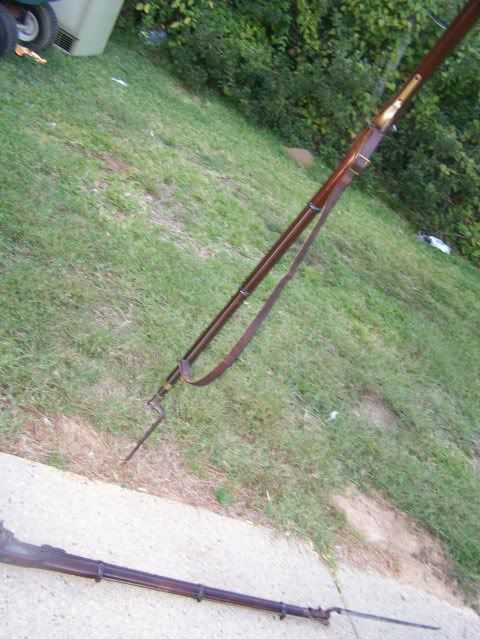Mosin-Marauder
New member
Good Evening everyone,
I've been looking over some things about Muzzle Loading and think I would very much like to get into historical rifles, at least one. I realize historic reproductions drive fairly high prices, but I am willing to save my pennies. I'd like it to be as accurate as possible but still be under a thousand. I'd like to possibly get this one next year. It's a reproduction of a 1853 3 Band Enfield. It was used by both sides during the Civil War, so I wouldn't have to buy two different rifles for both of my Civil War Reenactment Impressions (forgot to mention I am getting into reenacting as well haha, The Union Forever! ).
).
http://www.regtqm.com/ProductDetails.asp?ProductCode=GUN-043
I apologize in advance, but I have some fairly long winded questions for you as well. Most could probably be answered by folks more experienced than I.
1) I know I need a lot of stuff to get into this, powder measures, bullets (will get to this specifically), cleaning supplies, tools, etc. I also know there are a lot of things one needs to know to get started in black powder specifically, aside from the regular shooting of smokeless powder rifles etc. Is there a good series of videos and books you guys could recommend to someone who is beginning black powder, but already has experience in non-black powder shooting sports? One that, preferably, covers aspects such as cleaning and the things one needs. ( I don't plan to buy any in-line muzzleloaders, if that helps)
2) Where do I find bullets for the thing? I see only .58 round balls, nothing conical that isn't in a Sabot. Would it be okay to shoot .58 Lead Balls out of a rifled musket? I probably won't be shooting bullets that require a Sabot.
3) How bad would recoil be? The most I've ever been kicked was with my .30-06 and it is bearable. I'm by no means "scared" of the recoil, but I also wish to enjoy shooting the firearm more than once and quitting, if you get my meaning.
4) Any additional advice is Very much appreciated.
Thank you for any help you can provide, I am sorry for the all the questions, they probably sound stupid to someone who is even a bit experienced, but I'm green all the same to this, so any help is greatly appreciated.
Regards,
-Mo.
I've been looking over some things about Muzzle Loading and think I would very much like to get into historical rifles, at least one. I realize historic reproductions drive fairly high prices, but I am willing to save my pennies. I'd like it to be as accurate as possible but still be under a thousand. I'd like to possibly get this one next year. It's a reproduction of a 1853 3 Band Enfield. It was used by both sides during the Civil War, so I wouldn't have to buy two different rifles for both of my Civil War Reenactment Impressions (forgot to mention I am getting into reenacting as well haha, The Union Forever!
http://www.regtqm.com/ProductDetails.asp?ProductCode=GUN-043
I apologize in advance, but I have some fairly long winded questions for you as well. Most could probably be answered by folks more experienced than I.
1) I know I need a lot of stuff to get into this, powder measures, bullets (will get to this specifically), cleaning supplies, tools, etc. I also know there are a lot of things one needs to know to get started in black powder specifically, aside from the regular shooting of smokeless powder rifles etc. Is there a good series of videos and books you guys could recommend to someone who is beginning black powder, but already has experience in non-black powder shooting sports? One that, preferably, covers aspects such as cleaning and the things one needs. ( I don't plan to buy any in-line muzzleloaders, if that helps)
2) Where do I find bullets for the thing? I see only .58 round balls, nothing conical that isn't in a Sabot. Would it be okay to shoot .58 Lead Balls out of a rifled musket? I probably won't be shooting bullets that require a Sabot.
3) How bad would recoil be? The most I've ever been kicked was with my .30-06 and it is bearable. I'm by no means "scared" of the recoil, but I also wish to enjoy shooting the firearm more than once and quitting, if you get my meaning.
4) Any additional advice is Very much appreciated.
Thank you for any help you can provide, I am sorry for the all the questions, they probably sound stupid to someone who is even a bit experienced, but I'm green all the same to this, so any help is greatly appreciated.
Regards,
-Mo.


